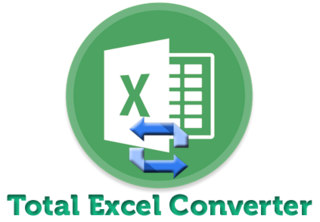Most Commented
Introduction to Data Analytics with Microsoft Excel




Description material

Introduction to Data Analytics with Microsoft Excel | Udemy
English | Size: 2.44 GB
Genre: eLearning
Explore the key features of Microsoft Excel that makes it such an essential tool for Data Analytics
What you'll learn
Learn the fundamentals of Excel spreadsheets, from their layout to the applications
Understand and apply Excel formulas and functions and apply techniques to recognize and avoid formula errors
Identify data attributes and view, enter, and format data types in Excel
Sort data and apply filters, including advanced filtering techniques
Create problem statements to tackle complicated "OR" criteria
Create Pivot tables and charts and work with Excel charts, including clustered columns, line graphs, and waterfalls
Understand and use the What-If Analysis toolkit which includes the Scenario Manager, Goal Seek, and Data Table functions
Utilize database functions created specifically to work with large datasets
Use the Analysis ToolPak to calculate basic statistical concepts such as correlation and covariance
Compute descriptive statistics and moving averages and apply exponential smoothing techniques
Utilize rank and percentile options and generate histograms
**This course includes downloadable instructor files to work with and follow along.**
One of the most rapidly developing areas in today's market is data analytics—it is also an area in which businesses are struggling to find qualified staff. In this course, we will explore the key features of Microsoft Excel that make it such an essential tool for data analytics.
Using the data analysis and visualization features that are native to Excel, this course will show you how to extract maximum value most efficiently from the information your organization collects. This course starts off with the fundamentals, walking you through all you need to understand about spreadsheets, from layout to applications. We will cover a variety of topics, including exploring formulas, cleaning data, and identifying data attributes.
This course demonstrates how to analyze data using Excel and tackle complicated criteria. We will use Excel charts to depict data, relationships, and potential outcomes. In addition, we will also be discussing how to use the what-if functionality of the Analysis ToolPak add-in that comes with Excel. Each section includes practical examples that show how to apply these techniques to real-world business problems.
After finishing this course, students will be able to:
Describe the fundamentals of Excel spreadsheets, from their layout to the applications
View, enter, and format data types in Excel
Understand and apply Excel formulas and functions
Import file data and remove duplicates
Identify data attributes
Sort data and apply filters, including advanced filtering techniques
Apply Concatenation and Sum-if formulas to analyze data sets
Create problem statements to tackle complicated "or" criteria
Create Pivot tables and charts
Work with Excel charts, including clustered columns, line graphs, and waterfalls
Utilize database functions created specifically to work with large datasets
Apply techniques to recognize and avoid formula errors
Understand and use the What-If Analysis toolkit which includes the Scenario Manager, Goal Seek, and Data Table functions
Use the Analysis ToolPak to calculate basic statistical concepts such as correlation and covariance
Compute descriptive statistics and moving averages and apply exponential smoothing techniques
Utilize rank and percentile options and generate histograms.
This course includes:
4+ hours of video tutorials
36 individual video lectures
Course files to follow along
Certificate of completion
Who this course is for:
Microsoft Excel novice
People who want to start their careers in data analytics
Those who want to utilize Excel for data analysis and explore the Analysis Toolpak

Join to our telegram Group
Information
Users of Guests are not allowed to comment this publication.
Users of Guests are not allowed to comment this publication.
Choose Site Language
Recommended news
Commented



![eM Client Pro 9.2.1735 Multilingual [Updated]](https://pikky.net/medium/wXgc.png)





![[PORTABLE] Movavi Screen Recorder 22.5.0 Multilingual](https://i.postimg.cc/QxMmJ3VX/Movavi-Screen-Recorder.png)
![Movavi Video Editor 24.0.2.0 Multilingual [ Updated]](https://pikky.net/medium/qhrc.png)

